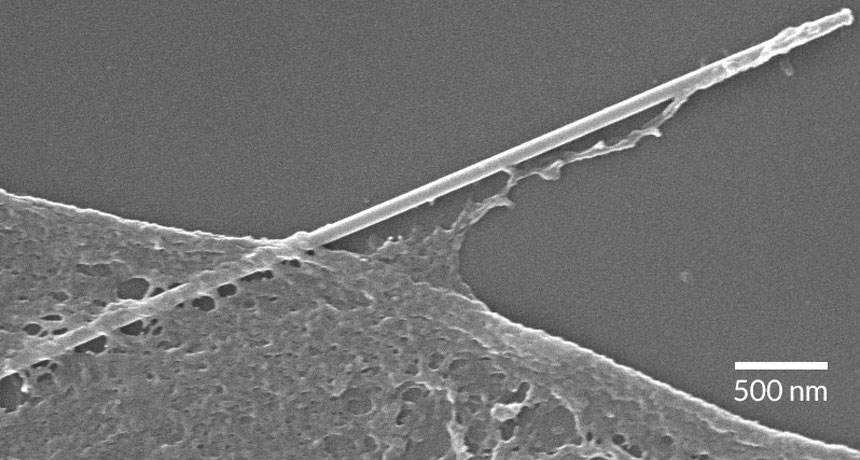Cells snack on nanowires

Human cells can snack on silicon.
Cells grown in the lab devour nano-sized wires of silicon through an engulfing process known as phagocytosis, scientists report December 16 in Science Advances.
Silicon-infused cells could merge electronics with biology, says John Zimmerman, a biophysicist now at Harvard University. “It’s still very early days,” he adds, but “the idea is to get traditional electronic devices working inside of cells.” Such hybrid devices could one day help control cellular behavior, or even replace electronics used for deep brain stimulation, he says.
Scientists have been trying to load electronic parts inside cells for years. One way is to zap holes in cells with electricity, which lets big stuff, like silicon nanowires linked to bulky materials, slip in. Zimmerman, then at the University of Chicago, and colleagues were looking for a simpler technique, something that would let tiny nanowires in easily and could potentially allow them to travel through a person’s bloodstream — like a drug.
Zimmerman’s team had previously shown that cells could take in silicon nanowires, but no one knew how it worked. So he added the nanowires to different kinds of cells — including human umbilical vein cells, rat nerve cells and mouse immune cells — in laboratory dishes. Under a microscope, Zimmerman says, “you can see the cell grab the wire, wrap a membrane around it, and pull it inside — kind of like a lasso.” Then, the wire travels on molecular tracks through the cell’s interior to settle around the nucleus.
Molecular tests suggested that nanowires entered via phagocytosis, a process by which some cells take in bacteria and cellular junk. During phagocytosis, a cell’s membrane encapsulates the junk, forming a pouch that carries the cargo to a recycling center inside the cell.
Not all cell types swallowed the wires, though. Knowing which types do, and how the wires get inside is important, Zimmerman says, because it could help in predicting where they would end up in the body.
But there’s still a long way to go from nanowire-loaded cells to working electronic devices, says Mark Reed, a physicist at Yale University. “This is the big question,” he says — because the nanowires aren’t actually hooked up to anything yet.